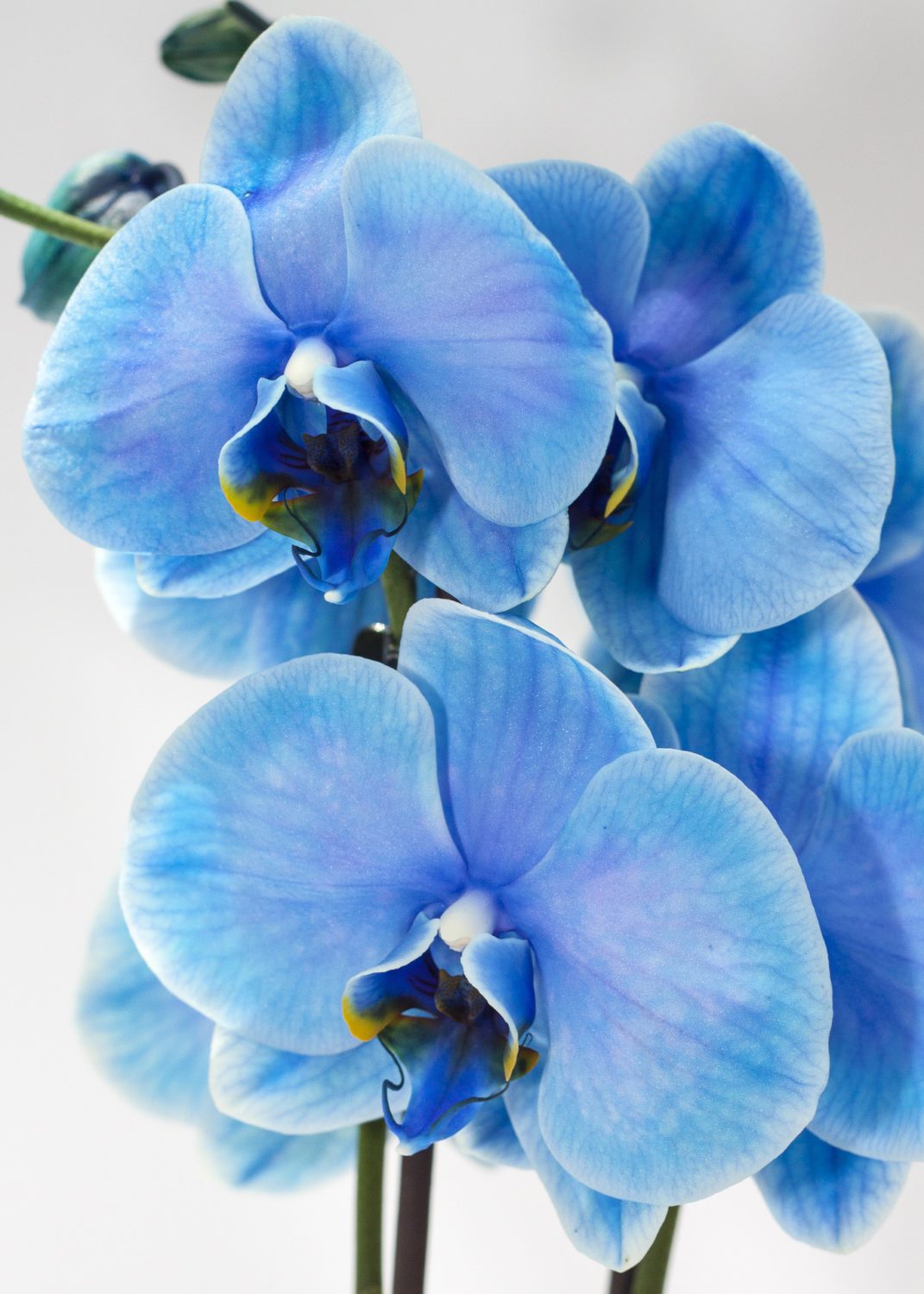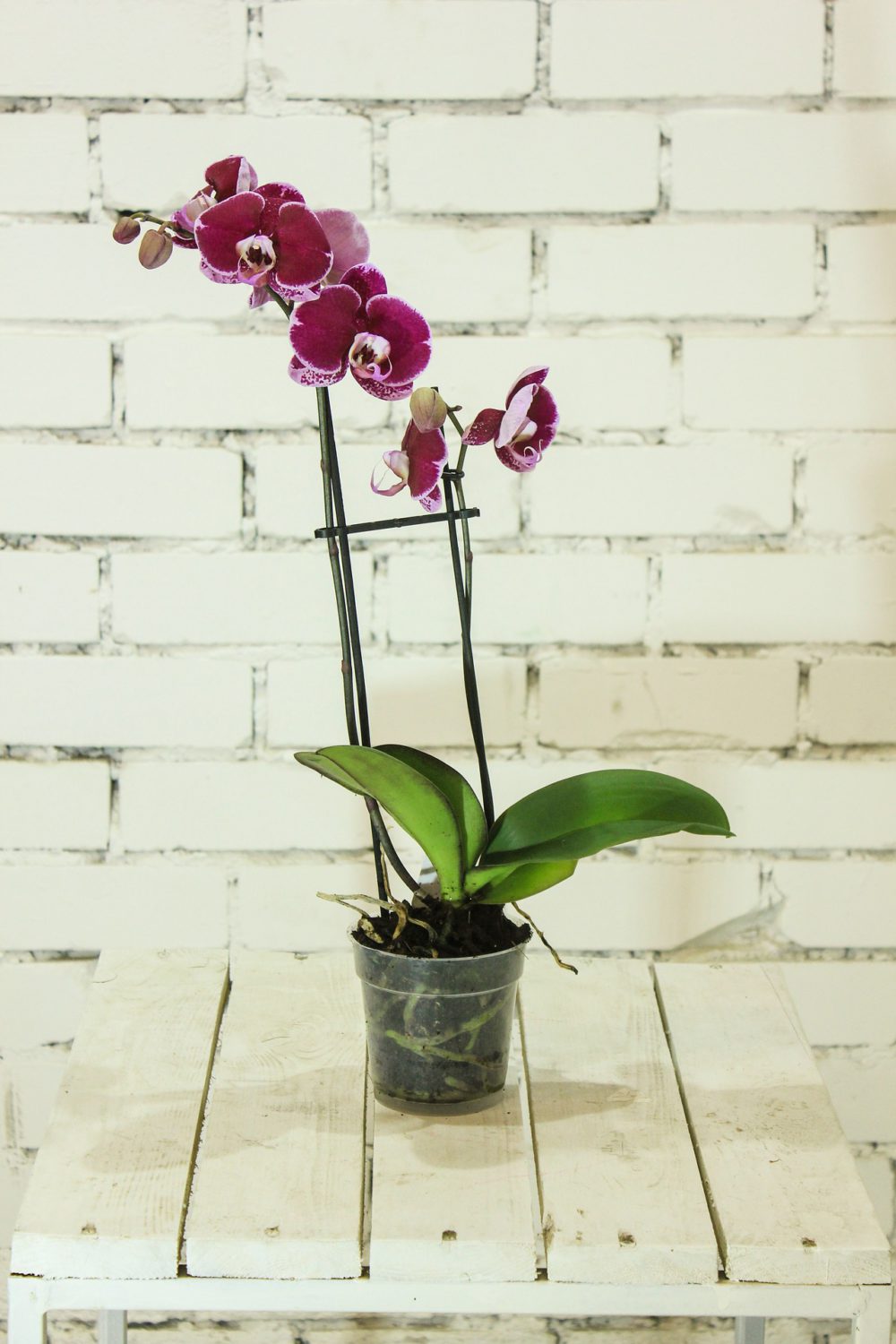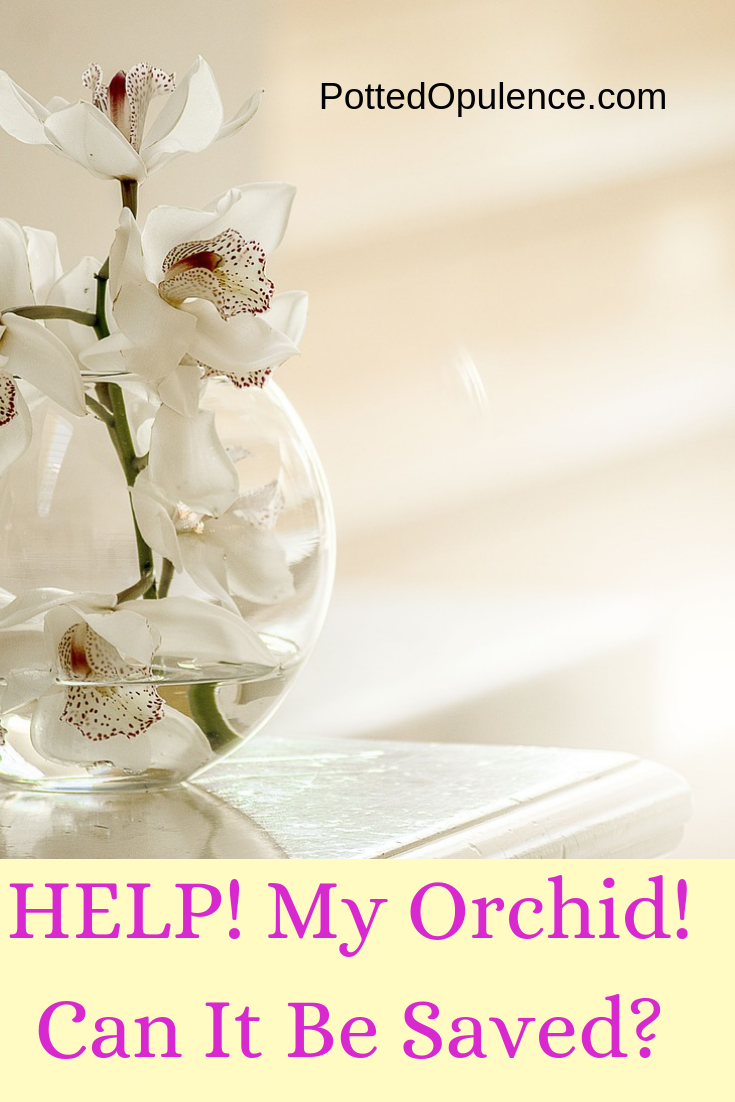 You’ve been admiring those spectacular blooms your Phalaenopsis orchid has been blessing you with for some time now. Maybe you bought it from a store, or perhaps you received this orchid as a gift. Seemingly all of a sudden, panic is replacing your admiration because you are saying, “My orchid is dying!” Now, here you are wondering what has gone wrong and if there’s anything you can do about it.
You’ve been admiring those spectacular blooms your Phalaenopsis orchid has been blessing you with for some time now. Maybe you bought it from a store, or perhaps you received this orchid as a gift. Seemingly all of a sudden, panic is replacing your admiration because you are saying, “My orchid is dying!” Now, here you are wondering what has gone wrong and if there’s anything you can do about it.
I may have good news for you. Your orchid may not be dying at all. Even if it is, there’s still a chance you can correct what you might be doing wrong and save it. Throughout this post, I’ll be discussing some facts you will need to know about orchid care and helping you keep your beloved orchid thriving for many years of enjoyment to come.
Yellowing Orchid Leaves
Are the bottom leaves on your orchid turning yellow and falling off? You may be experiencing the natural life cycle of an orchid. In order for a Phalaenopsis orchid to prepare for its next bloom cycle, it must first grow new leaves for photosynthesis and new roots.
When new leaves begin to form successfully up top, a healthy orchid will begin to shed its lower leaves. This gives the plant an ability to focus its energy into producing what it needs in that moment. This is both normal and good.
If you are finding that more than a leaf or two from the bottom are falling off and you’re seeing black spots or gooey places, there is likely an issue much greater than the natural life cycle. Fungus can be fairly common with orchids.
My Orchid Has Fungus! What Do I Do?
More often than not, if your Phal orchid has succumb to some sort of fungus, you can successfully treat it. My 2 strongest weapons? Hydrogen Peroxide (3% undiluted) and Ground cinnamon powder. I sprinkle cinnamon all over the orchid mix, as well as the crown (the center) of the orchid. This trick alone can prevent some fungus from growing to start with.
If you are actively dealing with fungus, grab yourself a small, clean spray bottle. Add some undiluted 3% hydrogen peroxide and begin to soak the affected areas of your orchid with this solution.
Do this daily for at least 2-10 days. You should see the fizzing process of the solution working on the fungus it has detected. Over time, you will notice the health of your plant returning.
When you no longer see the hydrogen peroxide causing fizz, you have successfully treated your plant’s infection. That is a good time to add the cinnamon to the affected area for further prevention.
In my post about trimming orchid roots, I mentioned the use of both peroxide and cinnamon while re-potting. These are powerful all natural ingredients for orchid health.
Is Your Orchid In A Proper Pot? 
One of the most common problems I see, along with most orchid enthusiasts, is that orchids sold in the commercial marketplace are rarely in proper pots or potting media.
What happens is far too often, people feel they cannot successfully keep an orchid alive. The reality is that the orchid was never meant to live past its current bloom cycle in the condition you bought it in.
It’s not your skills, or lack thereof, causing orchid death.
When purchased or received as a gift, if your orchid has come from a commercial greenhouse, there’s a strong chance it is in a pot with insufficient drainage and/or in the wrong potting mix for orchids.
Orchids need air to their roots and must drain properly. Having their roots sitting in water or not getting enough air flow are sure to make your healthy plant take a turn for the worse.
It is also one of the primary reasons for fungal infections or the different types of rot. For more information about what pots are designed for orchids, please see my post about orchid pots and how to choose the right one.
Potting Mix For Orchids
Another big issue with orchids is the type of potting medium used. Unlike many other houseplants, orchids cannot live in regular potting soil. They need drainage and air flow. More often than not, store bought orchids or those gifted to you, will not be in the proper mix to begin with.
Orchids are epiphytes, meaning they do not derive their nutrients from soil, but from their natural surroundings. Orchid potting mix, such as the type found here in my shop, is what these plants require in order to stay healthy. A quality bark mix or spaghnum moss will make a world of difference for your orchid.
Correctly Watering Orchids
There is so much misinformation out there about how to properly water an orchid. There is a somewhat popular method of watering which can be very detrimental to the health of your plant. You may be interested in my article about the best ways to water your orchids.
Both under watering and over watering orchids is a sure way to cause them premature death. The most absolute way to know whether or not you have a watering problem is by looking at your roots, though this is not always the best option. However, you can often tell a lot by the orchid’s leaves themselves. Here is a great article about over vs. under watering your orchids and the effect it can cause to the leaves.
 Phalaenopsis Orchids Light Requirements
Phalaenopsis Orchids Light Requirements
These orchids love bright but indirect light. Phalaenopsis will do okay with a north or east facing window. Protected west or shadier south facing windows will also be okay.
You can tell a lot about whether or not your orchid is receiving enough light by its leaf color. An orchid with light to medium green leaves is receiving adequate light. Dark green leaves are a sign that they are not getting proper amounts of light.
Phalaenopsis orchids in particular are very prone to sunburn. Burns are bad news for orchids and will often cause death. They are used to very dappled light in their native habitat, therefore direct sunlight is never recommended.
Something important to note about light for orchids is that inadequate light will also prevent reblooming. If all other requirements such as proper water and feeding are met but you’re having no success with getting a new spike or flowers won’t open, lighting could possibly be your issue. Here is a wonderful article from the American Orchid Society regarding the lighting needs of orchids and the impact lighting has on blooms.
Orchids Are Pretty Hardy
Don’t believe the lie that you can’t keep an orchid alive. All you need is right information and the proper supplies. It’s not as hard as you’ve been made to believe. Yes, you will make some mistakes but I believe you do have what it takes to enjoy your orchid for a very long time to come.
If you have any questions about this topic, please leave me a comment below. I’d be glad to help if I can!
For Pinterest:

Leave a Reply